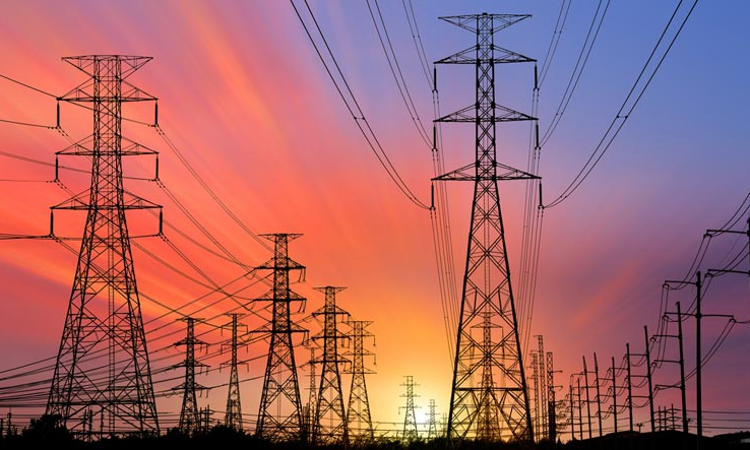
Electricity
An introduction to Electricity
Name: Own Teacher
Email: info@ownteacher.com
Created At: 01-11-2023
What is electricity?
Electricity is a set of physical phenomena associated with the presence and motion of matter that has a property of electric charge. It is related to magnetism and is part of the phenomenon of electromagnetism, as described by Maxwell's equations .Electricity is both a basic part of nature and one of the most widely used forms of energy .
How is electricity generated?
Electricity can be generated from a wide variety of energy sources, both renewable and non-renewable. Power plants are used to produce the electricity we use in our daily lives. Depending on the type of energy sources used, electricity generation can be classified into two major groups: renewable and non-renewable .
Renewable energy sources for electricity generation include solar energy, wind energy, hydroelectric power, geothermal energy, and biomass. These sources are considered renewable because they are naturally replenished and have a lower environmental impact compared to non-renewable sources.
Non-renewable energy sources for electricity generation include coal, natural gas, nuclear energy, and oil. These sources are finite and have a higher environmental impact due to the extraction and combustion processes .
Advantages of electricity
Electricity has several advantages that make it a widely used form of energy:
- Accessibility and ease of production: Electricity can be generated from a wide variety of energy sources, both renewable and non-renewable .
- Manageability and ease of transport: Electricity can be transported over long distances and on a large scale through transmission and distribution networks .
- Versatility and ease of transformation: Electricity can be transformed into other types of energy such as light, heat, or motion.
Importance of electricity in daily life
Electricity plays a crucial role in daily life and has dramatically changed the way we live. It powers various essential aspects of modern life, including lighting, heating, air conditioning, electronics, transportation, and industrial processes.
Despite its importance, people often take electricity for granted and may not fully appreciate its significance until faced with a power outage or lack of access to electricity. The reliable availability of electricity has become an integral part of our daily routines and contributes to our overall well-being and productivity.
**
Electricity is a fundamental form of energy resulting from the movement of charged particles, typically electrons. It plays a pivotal role in our modern world and powers nearly all of our technological advancements. Here is a comprehensive explanation of electricity:
1. Electric Charge:
- Electricity is generated by the presence and movement of electric charge.
- Atoms are composed of charged particles, including protons (positively charged) and electrons (negatively charged).
2. Electric Current:
- Electric current is the flow of electric charge in a conductor, typically measured in amperes (A).
- It is the rate at which electric charge moves past a specific point in a circuit.
3. Voltage:
- Voltage (or electric potential) represents the electric potential difference between two points in a circuit.
- It is measured in volts (V) and is responsible for driving the flow of electric current.
4. Resistance:
- Resistance (measured in ohms, Ω) opposes the flow of electric current in a circuit.
- It determines how much current can pass through a component and follows Ohm's Law (V = I * R).
5. Electrical Circuits:
- Electrical circuits are systems of interconnected components and conductors that provide a path for the flow of electric current.
6. Types of Electricity:
- Direct Current (DC): Current flows in one direction, commonly used in batteries and electronic devices.
- Alternating Current (AC): Current periodically reverses direction, the form of electricity delivered to homes and businesses.
7. Conductors and Insulators:
- Conductors are materials that allow electric charge to flow easily (e.g., metals).
- Insulators are materials that inhibit the flow of charge (e.g., rubber, plastic).
8. Electrical Power:
- Electrical power is the rate at which electrical energy is transferred or converted. It is measured in watts (W).
- Power is calculated using the formula P = VI, where P is power, V is voltage, and I is current.
9. Electrical Safety:
- Electricity poses potential hazards, including electrical shock and fire, making safety measures crucial.
10. Generation and Distribution:
- Electricity is generated from various sources, including fossil fuels, nuclear, and renewables, and then distributed through electrical grids to consumers.
11. Electrical Devices:
- Electrical energy powers a wide range of devices, from lights and appliances to computers and industrial machinery.
12. Electrical Symbols:
- Electrical circuits are often represented using standardized symbols in schematic diagrams.
13. Renewable Energy:
- Sustainable sources like solar, wind, and hydropower contribute to cleaner electricity generation, reducing environmental impacts.
Electricity is the lifeblood of our technological civilization, enabling innovations in communication, transportation, healthcare, and much more. Understanding its principles is essential for safe and efficient utilization in various applications.
Conclusion
Electricity is a fundamental part of nature and one of the most widely used forms of energy. It is generated from various energy sources, both renewable and non-renewable. Electricity has numerous advantages, including accessibility, manageability, and versatility. Its importance in daily life cannot be overstated, as it powers essential aspects of modern living.
Comment List
Leave a Comment.



